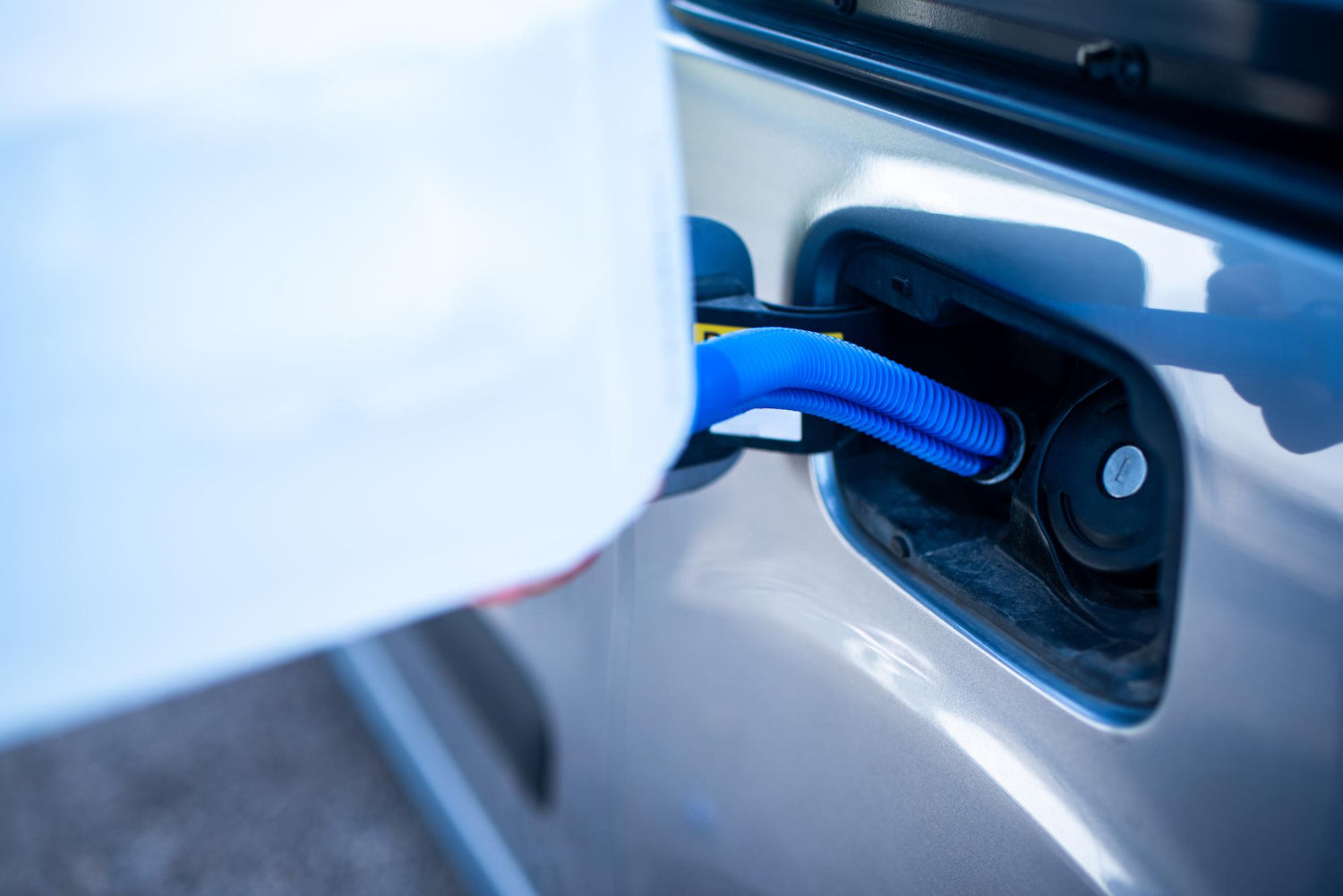
The Economic Impact of AdBlue Adoption in the Automotive Industry
Overview of AdBlue and Its Importance in the Automotive Industry
AdBlue, a critical component for modern diesel engines, has emerged as a pivotal solution in the quest for greener automotive technologies. Composing high-purity urea and deionized water, this clear liquid is essential in reducing harmful nitrogen oxide emissions from diesel vehicles. Its adoption has been propelled mainly by stringent environmental regulations across the globe, aiming to curb the ecological footprint of the transportation sector.
One notable purveyor of AdBlue in Australia is DPG Australia. This company has positioned itself at the forefront of the industry by providing high-quality AdBlue to meet the rising demand. The company's dedication to sustainability and environmental responsibility mirrors the broader industry's shift towards cleaner fuel alternatives and emission control strategies.
As environmental concerns take centre stage, adopting AdBlue has become more than a compliance measure; it represents the automotive industry's commitment to a cleaner future. While the benefits of AdBlue, particularly in terms of emission reductions, are clear, its economic impact extends beyond the environmental sphere. The implications for manufacturers, consumers, and related industries are complex and multifaceted. From the cost of integration into existing automotive systems to the operational expenses borne by consumers and the ripple effects throughout the supply chain—each aspect offers insight into the economic landscape shaped by AdBlue.
The Economic Implications of AdBlue for Manufacturers and Consumers
The integration of AdBlue into the automotive industry has significant economic implications, influencing manufacturers' and consumers' cost structures and financial strategies. As companies like Euroblue continue to expand the availability of AdBlue, understanding these economic dynamics becomes increasingly essential.
Manufacturers: Costs and Investments
The adoption of AdBlue technology requires manufacturers to make substantial investments in several areas:
- Research and Development: Developing AdBlue-compatible vehicles entails significant investment in R&D to ensure compliance with emissions standards and to maintain performance standards.
- Facility Upgrades: Manufacturers must upgrade their production lines to integrate AdBlue systems into new vehicle models, which involves considerable capital expenditure.
- Pricing Strategy Adjustments: The costs incurred in developing and manufacturing AdBlue-compatible vehicles can lead to higher retail prices, which manufacturers must balance against consumer demand and competitive pricing.
These investments are not just a matter of regulatory compliance; they are strategic moves in an industry increasingly prioritizing sustainability. As a result, manufacturers are not only re-evaluating their cost structures but are also considering how these investments will position them in a market that values environmental responsibility.
Consumers: Operating Costs and Savings
The economic implications of AdBlue for vehicle owners manifest in various ways, impacting their operating costs and potential savings:
- AdBlue Consumption Costs: Consumers must regularly purchase AdBlue, like Euroblue, to replenish their vehicles' systems, which adds to their operating expenses.
- Fuel Efficiency: AdBlue helps improve fuel efficiency, which can offset the additional cost of AdBlue over time.
Here are more detailed insights into how AdBlue affects consumer expenses:
- Immediate Costs:
- The purchase price of AdBlue
- The frequency of refills depends on vehicle usage
- Long-Term Savings:
- Enhanced fuel efficiency leads to reduced fuel costs
- Potential reduction in maintenance costs due to cleaner engine operation
- The extension of vehicle lifespan through better emissions control
These factors contribute to a complex economic picture for consumers. While the initial and ongoing costs of AdBlue can add to the total cost of vehicle ownership, the long-term economic benefits—from fuel savings to lower maintenance costs—can provide significant financial advantages.
While initially driven by environmental regulations, the widespread adoption of AdBlue carries noteworthy economic implications for manufacturers and consumers. For manufacturers, it is a balancing act of recovering costs while staying competitive. For consumers, it involves a calculus of immediate costs versus long-term savings. As the market for AdBlue, serviced by providers like Euroblue, continues to mature, its economic impact will likely evolve, potentially bringing more nuanced financial dynamics to the automotive industry.
The Wider Economic Impact on the Automotive Supply Chain and Related Industries
The proliferation of AdBlue extends its economic impact well beyond the direct costs for manufacturers and consumers. It also catalyzes a series of shifts within the automotive supply chain and adjacent industries.
Supply Chain Dynamics
The inclusion of AdBlue technology affects the automotive supply chain in several key ways:
- AdBlue Production and Distribution: The demand for AdBlue stimulates growth in the chemical industry for urea production and creates new opportunities in distribution and retail to cater to an expanding market.
- Logistics and Infrastructure: A more robust distribution network is required to ensure AdBlue availability, influencing logistics companies to adapt and expand their services.
- Parts and Service Networks: There is an increase in demand for AdBlue-compatible details and a need for service stations trained in handling and refilling AdBlue, which affects employment and training within the sector.
These shifts suggest a considerable economic impact on the supply chain, which must evolve to support the ongoing use of AdBlue in diesel vehicles.
Broader Economic Effects
Beyond the supply chain, the economic effects of AdBlue ripple into broader areas:
- Employment Opportunities: The growth in AdBlue-related industries may lead to job creation, from production to point-of-sale roles. However, it might also displace workers in sectors that must be aligned with emission-reduction technologies.
- Secondary Industry Growth: Industries related to environmental technology and sustainability may experience growth due to increased interest in and funding for emission reduction technologies.
- International Trade: Countries with significant urea producers, a key ingredient in AdBlue, could impact their trade balances as demand increases.
This broader economic landscape is complex and dynamic, influenced by market forces, regulatory environments, and global trade relations. As the industry continues to adapt to and adopt AdBlue, these economic factors must be closely monitored and managed to ensure a sustainable transition.
The widespread adoption of AdBlue, as supported by an increasingly complex supply chain and affected industries, is a powerful economic force. It has the potential to create new markets and opportunities while also presenting challenges that must be navigated with care. As the automotive industry continues to evolve towards greater sustainability, the economic impact of products like AdBlue will remain a topic of significant importance and interest.
Future Prospects and Economic Opportunities Stemming from AdBlue Adoption
As we look to the future, the trajectory of AdBlue adoption is poised to reshape the automotive industry and the broader economic landscape. Potential innovations and financial opportunities could emerge due to this shift toward more environmentally friendly technologies.
Innovation and Market Growth
The market for AdBlue is set to grow, driven by ongoing regulations and the increased production of diesel vehicles requiring AdBlue. This growth is expected to stimulate innovation within the industry as companies compete to improve the efficiency and cost-effectiveness of AdBlue-related technologies. As manufacturers seek to differentiate their offerings, investment in research and development will likely increase, potentially leading to breakthroughs in emission control technologies that could transcend the automotive industry, finding applications in other sectors that rely on diesel engines.
Furthermore, the economic opportunities presented by the expanding AdBlue market are not limited to the automotive industry. The increased demand for high-purity urea is likely to positively affect the chemical industry, potentially driving advancements in production techniques that could reduce costs and enhance sustainability.
Challenges and Economic Risks
However, the future of AdBlue is not without its challenges and economic risks, which may include:
- Supply Constraints: Fluctuations in the global supply of urea could affect AdBlue production, leading to price volatility and supply chain disruptions.
- Regulatory Changes: Governments may alter regulations, impacting AdBlue requirements and potentially disrupting market stability.
- Cost-Benefit Analysis: The automotive industry must continuously assess the cost-effectiveness of AdBlue technology compared to emerging alternatives.
Each of these factors has the potential to influence the economic impact of AdBlue significantly and will require careful monitoring and strategic planning by all stakeholders involved.
The continued adoption of AdBlue presents a dynamic and evolving economic narrative. It's a story of potential growth and innovation, countered by the need to navigate risks and challenges. As the market matures, the decisions made by manufacturers, consumers, and policymakers will shape the economic impact of AdBlue and its role in driving the automotive industry toward a more sustainable future.
Conclusion
Adopting AdBlue has brought about a transformative economic impact on the automotive industry. While it has introduced additional costs for manufacturers and consumers, it has also stimulated supply chain growth and innovation. Looking ahead, AdBlue presents a spectrum of economic opportunities and challenges.
The industry must navigate these strategically to ensure a sustainable balance between environmental commitments and economic growth. As we advance, the continued evolution of AdBlue will be integral to shaping a cleaner, more efficient future in automotive technology.
